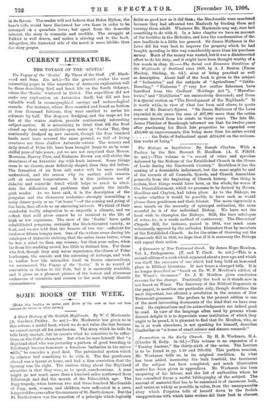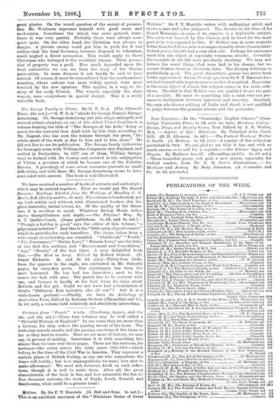Persecution in the Early Church. By H. B. Workman, M.A.
(Charles H. Kelly. 35. 6d.)—This volume is an expansion of a , "Fernley Lecture," the thirty-sixth of the series. The Lecture is to be found in pp. 1-10 and 283-352. This portion remains, Mr. Workman 'tells us, in its original condition. In what has been added, increasing the bulk fourfold, the treatment of the subject has been completed, and much illustrative. matter has been given in appendices. Mr. Workman has been unsparing of his labour, and the list of authorities whom he. has consulted forms a useful bibliography of the subject. The. amount of material that has to be examined is of enormous bulk, and varies as widely as possible in value, from the unsurpassable. story which Perpetua tells of herself down to the foolish exaggerations with which later writers did their best to obscure;
great glories. On the vexed question of the extent of persecu- tion Mr. Workman expresses himself with good sense and moderation. Sometimes the attack was more general, some- times it was very partial. Probably there were always some quiet spots. On the other hand, the Christian was always in danger. A private enemy could put him in peril, for it was seldom that the local Governor, however disposed to toleration, could neglect a direct accusation. This would apply to those Christians who belonged to the wealthier classes. Their posses- sion of property was a peril. How much depended upon the local authorities we can see from the story of the Marian persecution. In some dioceses it can hardly be said to have existed. Of course, it must be remembered that the south-eastern counties, where culture was most widely spread, were most touched by the new opinions. This applies, in a way, to the story of the early Church. The women, especially the slave women, were everywhere in special danger. This is a really valuable book.















































 Previous page
Previous page